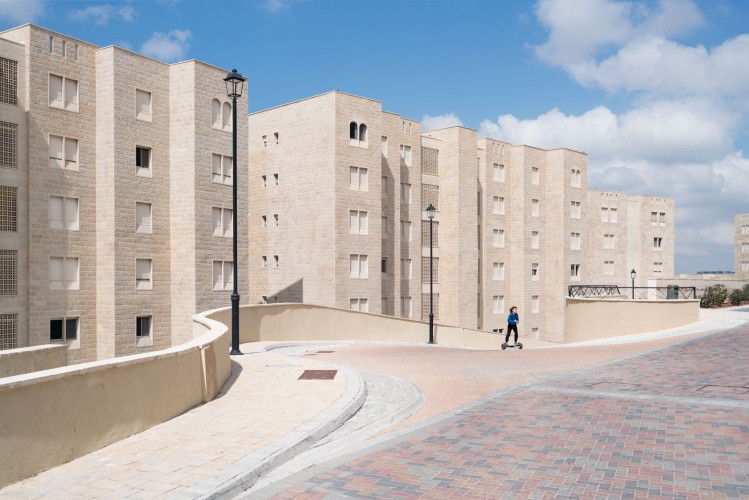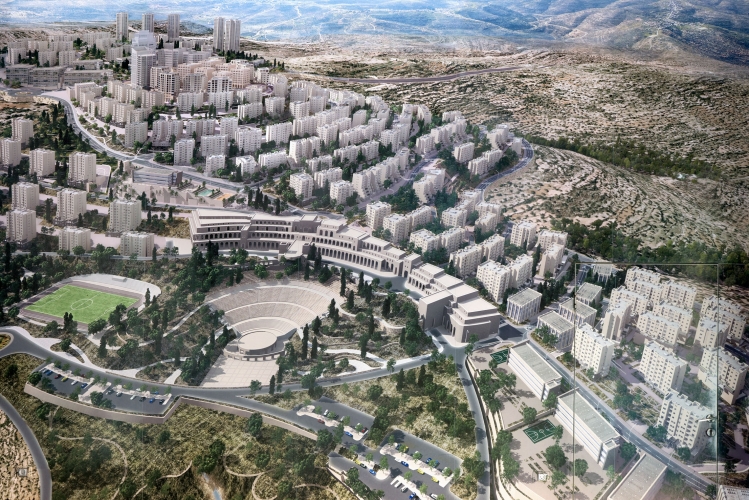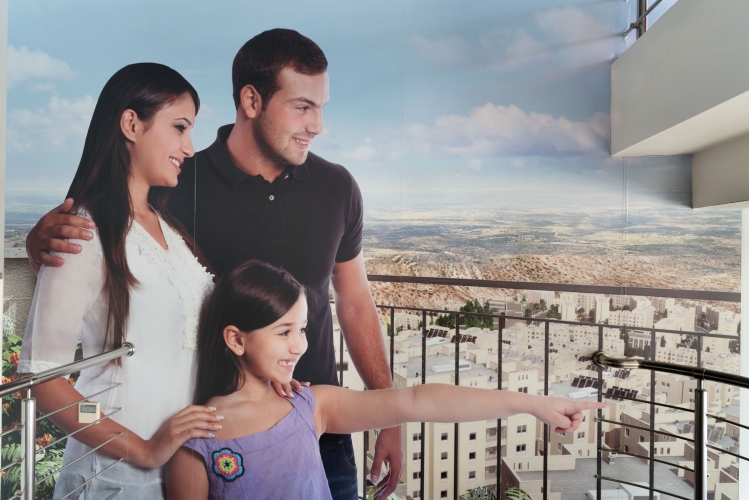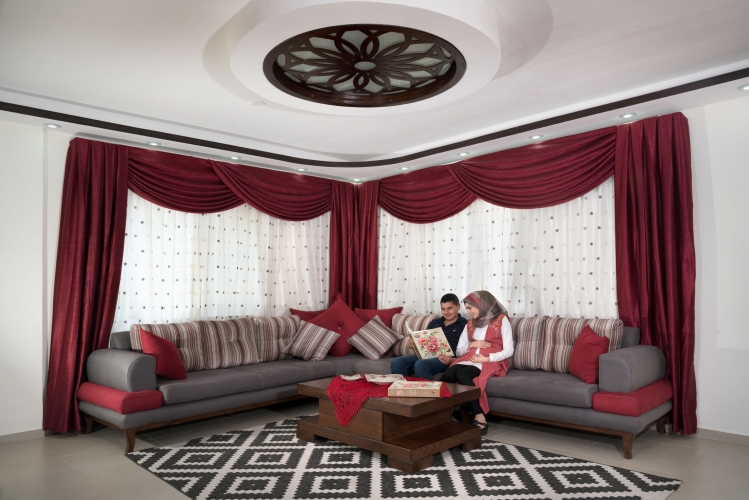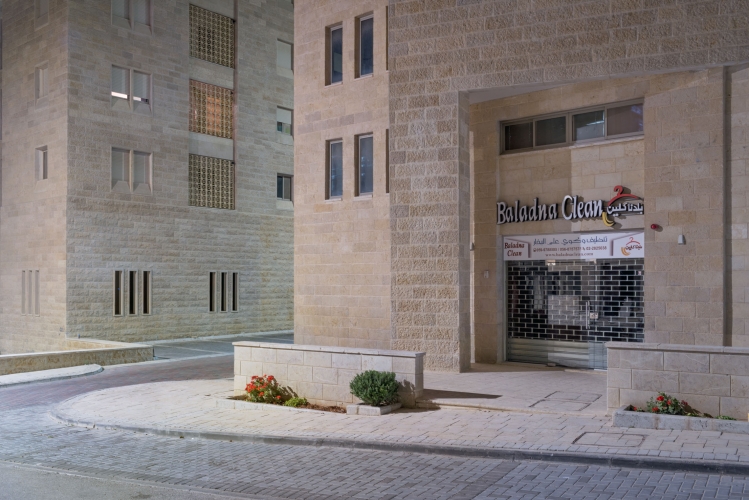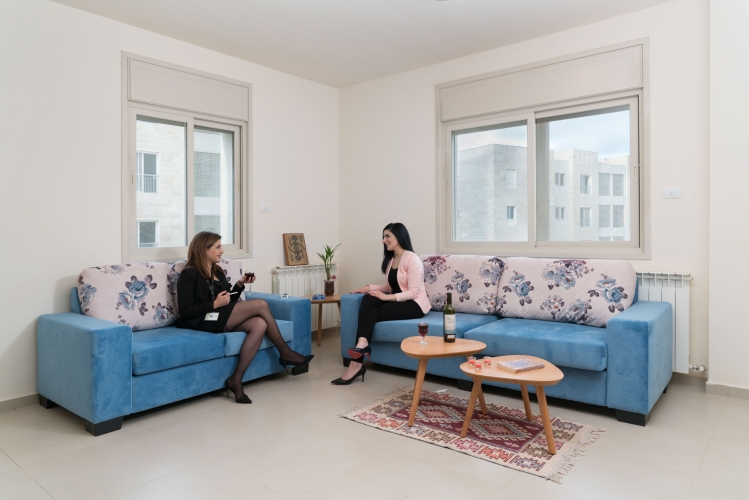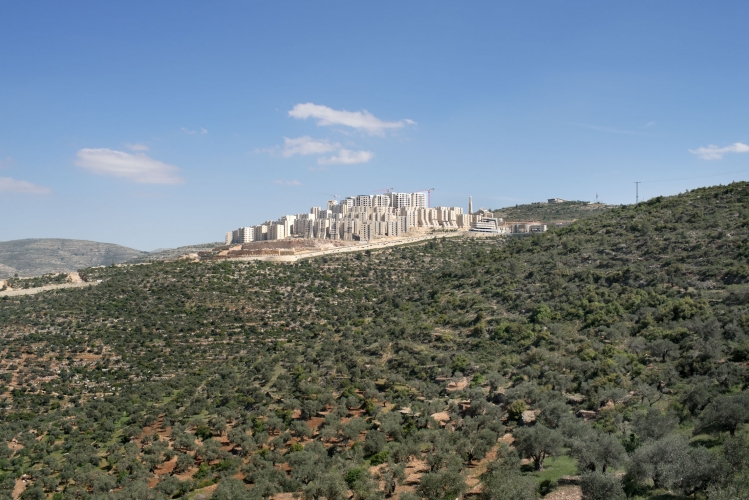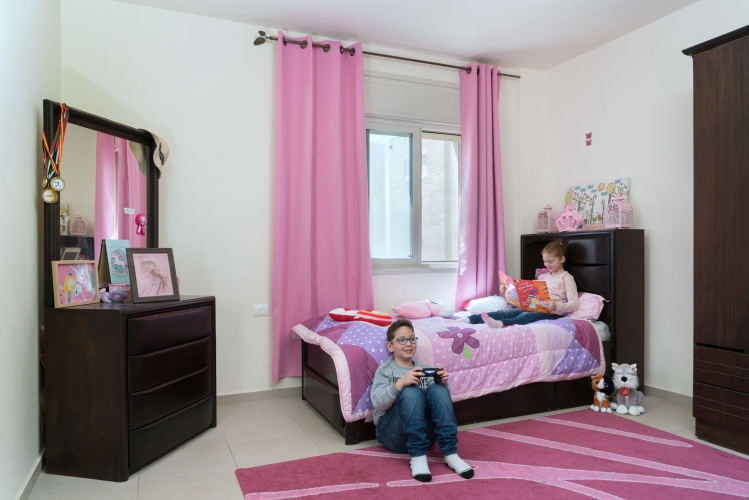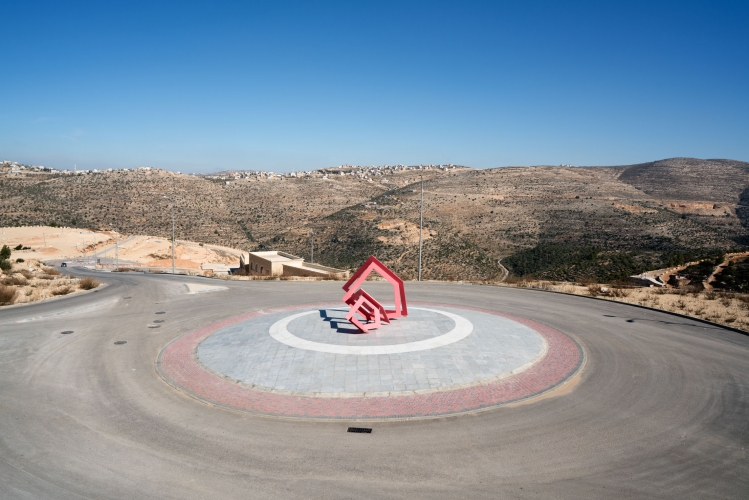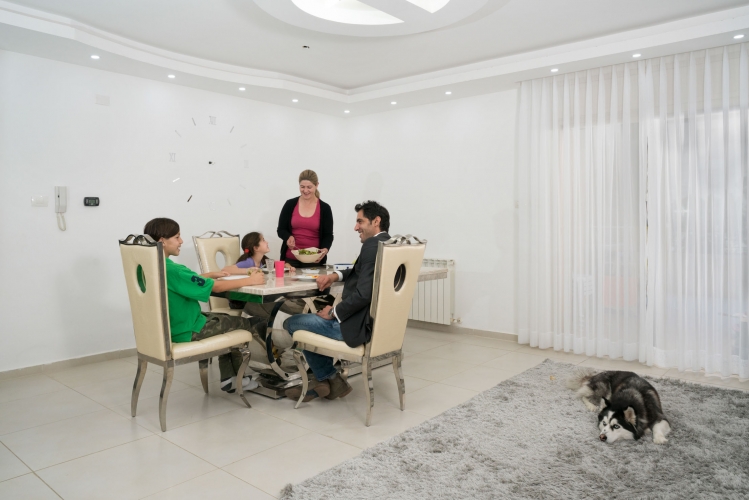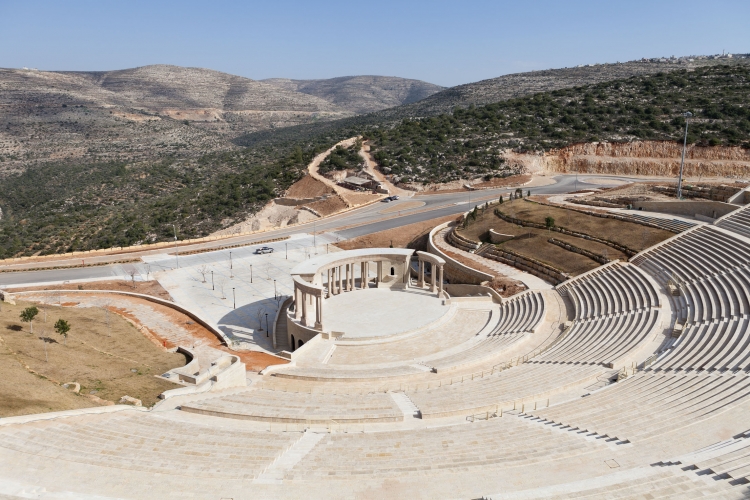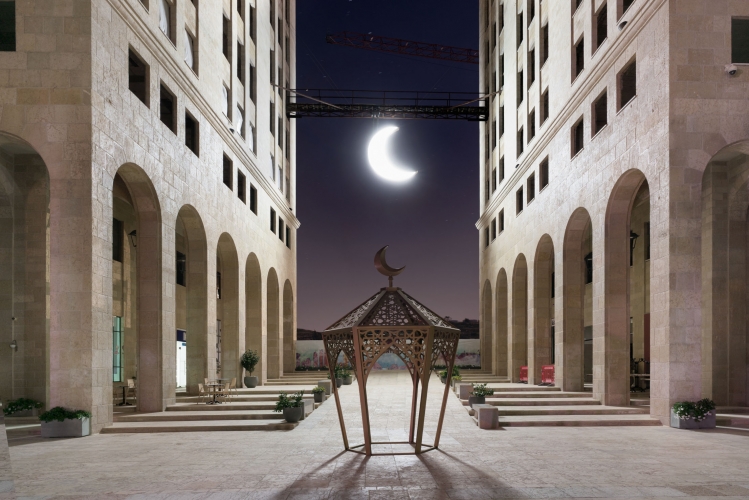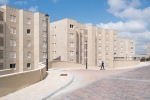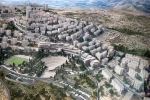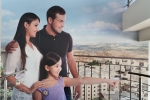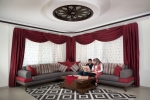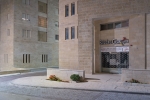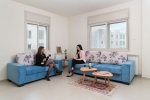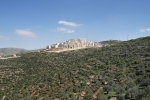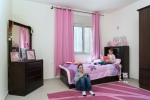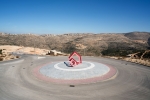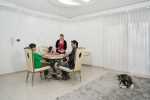Andrea and Magda are a duo of photographers from France and Italy. They lived and work mostly in the Middle East since 2008. They interrogate the models shaping contemporary societies in the Middle East in a context of globalization, exploring the economic, cultural and architectural aspects. Their first chapter «Palestinian Dream» was proposing a different view of Palestine in transformation with the emergence of a consumption society in the context of the Israeli occupation. With «Sinai Park» , they have then explored the consequences of the mass tourism on the territory and architecture on the Red Sea coast in Sinai. With « Arabian tales », images of the the shooting stage of the TV series was revealing the self-representation of the Middle-East through television. The fourth chapter, «Birth of a Utopia» tells the genesis of a
new planned city in Palestine.
Their work has been shown in different photography events and museums such as La Maison Européenne de la Photo or Fotomuseo Bogotà and was published in magazines internationally (Time, 6 mois, Newsweek Japan, Courrier International, Sunday Times magazine, Internazionale, Libération…). They recently received the support of CNAP (Centre National des Arts Plastiques) and Fondation Les Treilles for their last project “Arabian Tales”, and were nominated for the Prix Pictet 2016.
"Birth of a Utopia" by artists' duo Andrea and Magda is among the winners of this year Gibellina Photoroad open call. The photo series has been selected by YET's team over fifteen works.
When we first discovered Rawabi in 2012, we were fascinated by the powerful marketing
When we first discovered Rawabi in 2012, we were fascinated by the powerful marketing
images of the visitor center: a 3D film showing the future life of the city with happy westernlooking
families, living in spacious apartments with modern equipment. Sky views showing
the rendering of the future city that reminds undoubtedly the aspect of an Israeli settlement,
except for its giant Roman style amphitheatre and its mosque... At the heart, the open air mall
with famous western brands, and at the highest point of the hill, the towers of the business
center. In these images, the surrounding settlements, the separation wall and the villages are
erased, and only the hills covered with olive trees appear.
We were then exploring the transformations of the society and economy in Palestine in the
context of globalization; Rawabi appeared like an exemplar illustration of the liberal dream
defended by the Palestinian elites. It echoes the Renaissance utopia of the “Ideal City”,
aspiring to human and architectural perfection, Rawabi's urban model seems to embrace
the qualities of “good citizenship” expected for the future State of Palestine.
We decided to show the genesis of Rawabi, at this stage where everything is still brand new
and looks identical to the advert images. We chose to alternate between images of the city's
streets with their inhabitants, photos of promotional posters, and staged scenes of Rawabi's
inhabitants, where they recreate a plausible scene of their daily life, in order to create a
feeling of confusion between artificial and real. This sense of uncertainty, similar to the
surrealist feeling, is for us a reflect of the disconnection of our contemporary world with
reality.
Rawabi is the first planned city in the West Bank built for Palestinians. It is 9 kilometers outside Ramallah and 20km from Jerusalem, built on a hill that was an olive grove until a few years ago. The city is a private real estate project, imagined and initiated by the Palestinian- American entrepreneur and billionaire Bashar Masrim and co-financed by Qatar. It is designed to house 40 000 people, but only 300 people are really living in Rawabi now. The project has received huge attention, both from the international and local media. It has been greeted with both enthusiasm and indignation by the Palestinian people. The way of life and
the cultural model that Rawabi is selling strongly refers to western imagery, glamorizing a sense of modernity, civilization and progress, in radical opposition to the middle eastern tradition. After several decades of political resistance to the occupation, the idea of creating a prosperous and modern city, disconnected from the local realities is a political switch: Masri makes it clear “We will live like normal people, until the situation is normal”.
However, given the context of the Israeli occupation, this is a highly risky commercial project. The development has been on the threshold of bankruptcy even before the first residents started to move in. Like all Palestinian cities, Rawabi depends on the permission of Israeli authorities for the construction of roads, or water connection: the project was delayed by two years as the water permits were delayed, and consequently potential buyers pulled out. The number of inhabitants is still too low to cover the minimum costs of the basic services, that are provided by subsidiary companies of the constructor, which raises questions about long term viability of the city’s municipal services. The success of Rawabi also depends on whether the city can create jobs. Other large cities like Ramallah & Nablus are difficult to reach because of the occupation (checkpoints, limited roads etc...) and so the new city must find ways to attract companies to set up head offices there. So far, only subsidiaries of Massar have moved their HQ in Rawabi's buildings.
Governance is another challenge. Currently elected neighbourhood Home Owners associations work in parallel with a symbolic municipality, overseen by the construction company. Private management is preferred as public institutions are considered corrupted and and sectarian. This is a unique experiment, as people from across Palestine, from areas such as Hebron, Jenin, Bethlehem, Haifa or Jerusalem, all with different cultural habits and expectations of civil rights, come together for the first time to create a new neighbourhood. No one can tell what Rawabi will look like in the future: a high-tech and crowded modern
Palestinian city, or an empty shell, like some western suburbs built in Europe during the 70's...
Website
andrea-magda.photoshelter.comwww.gibellinaphotoroad.it/

